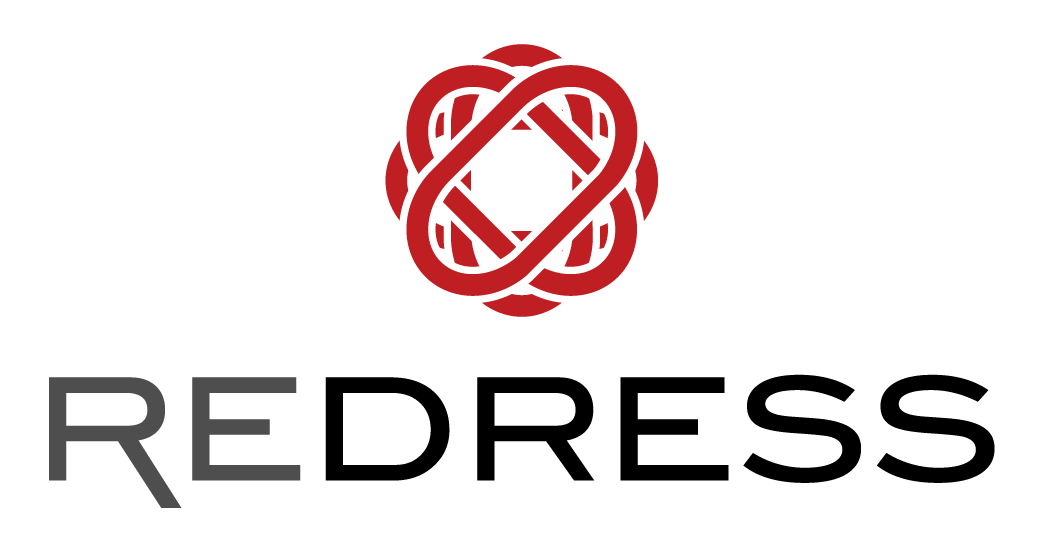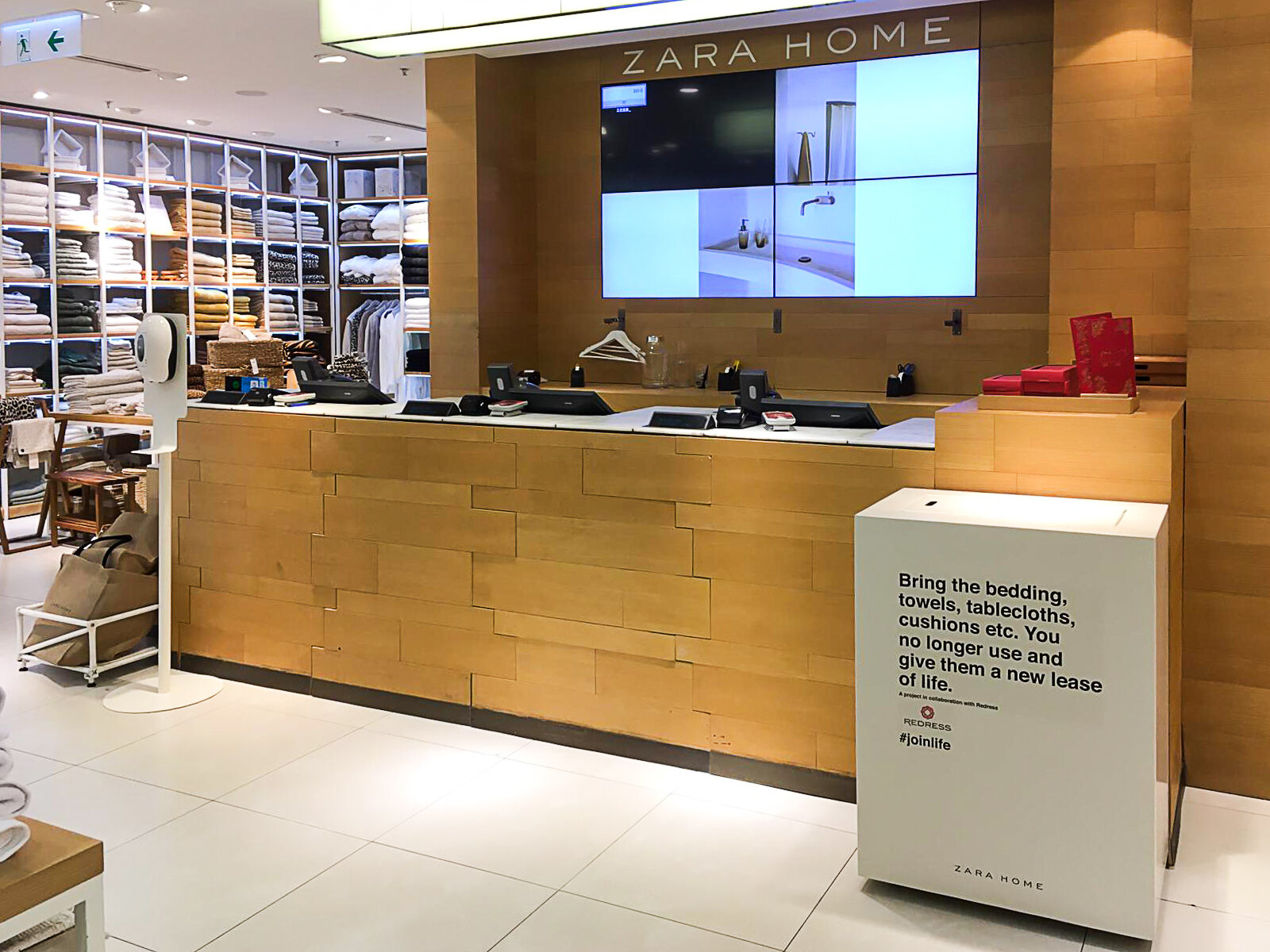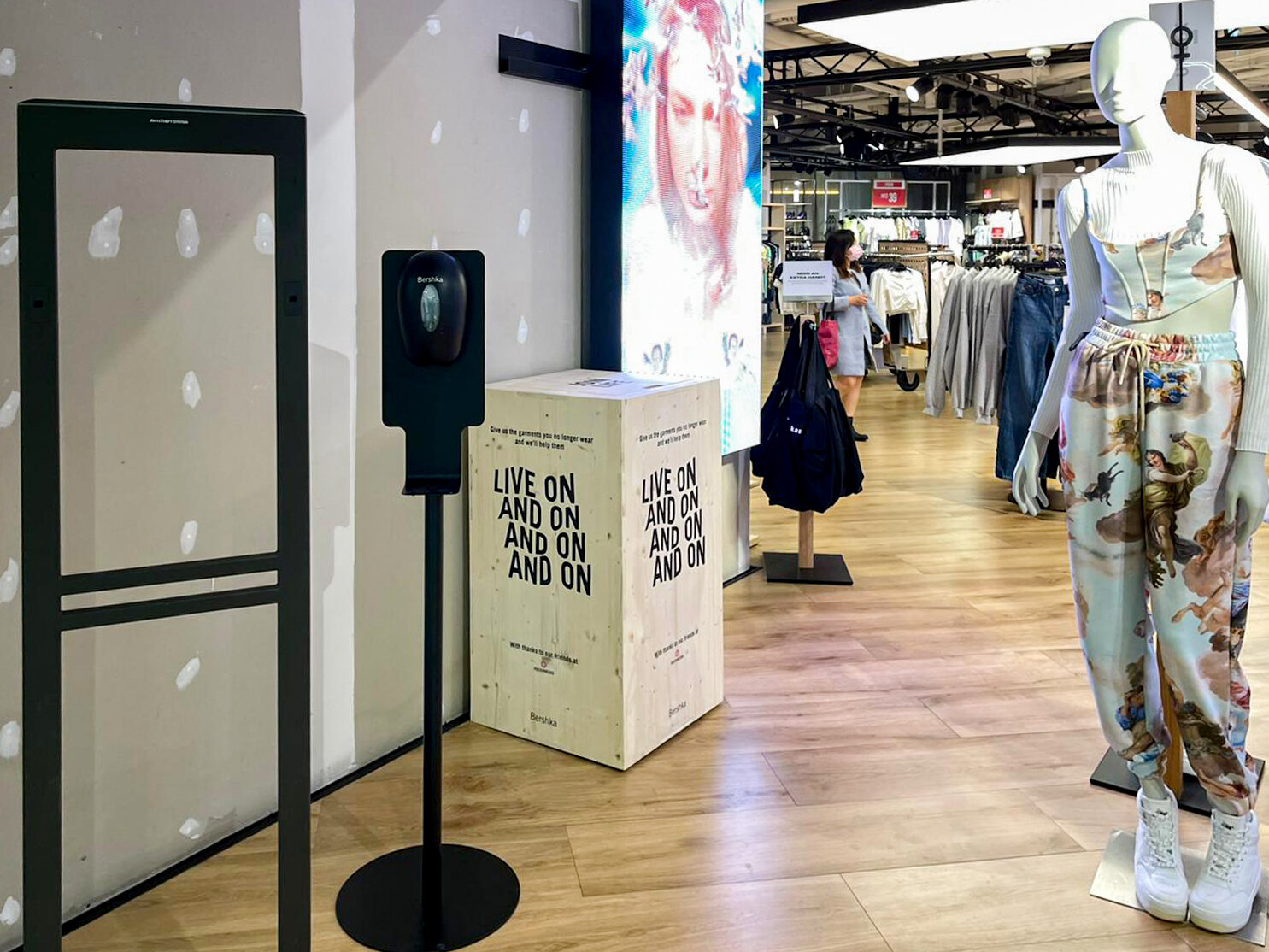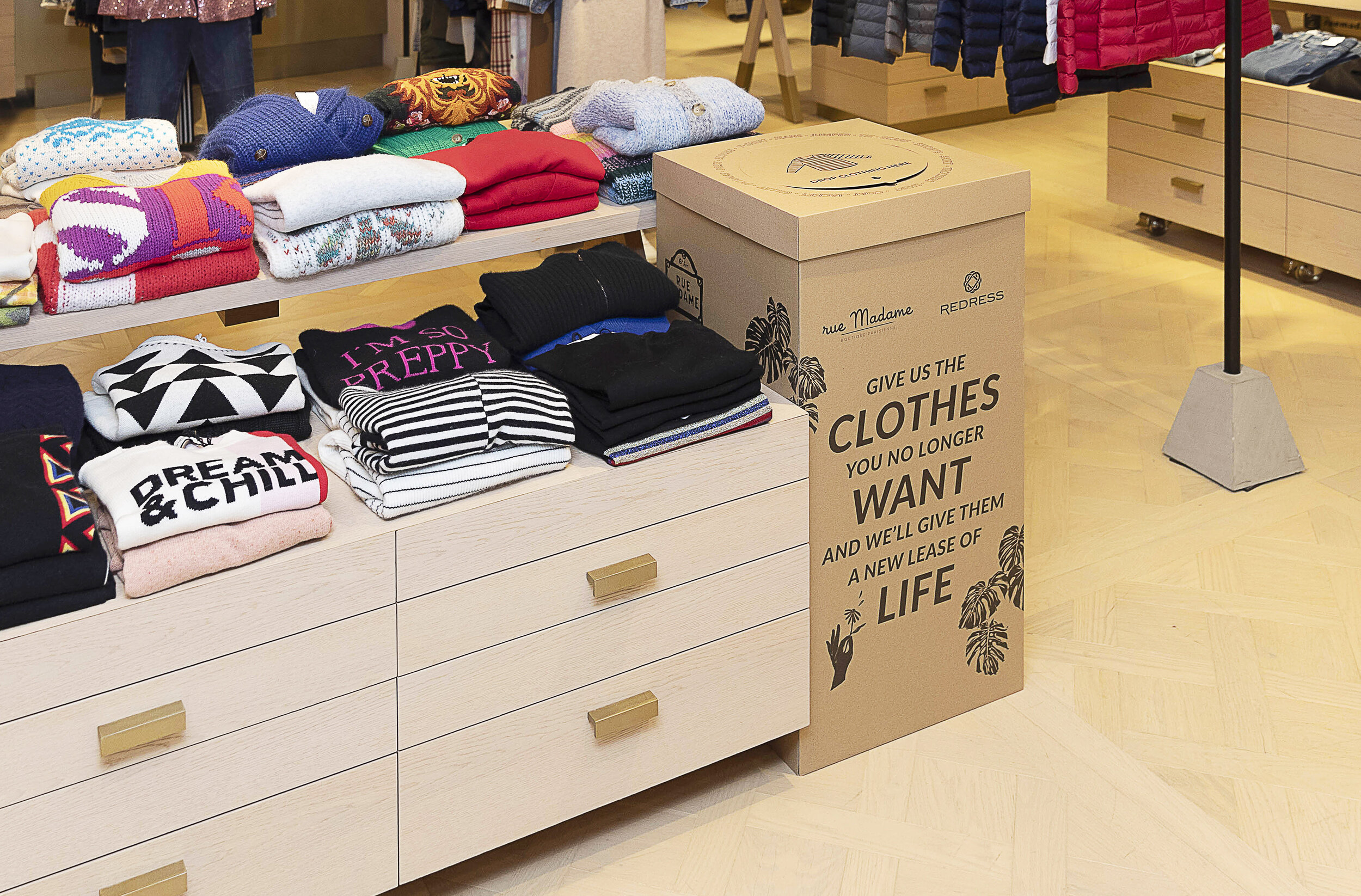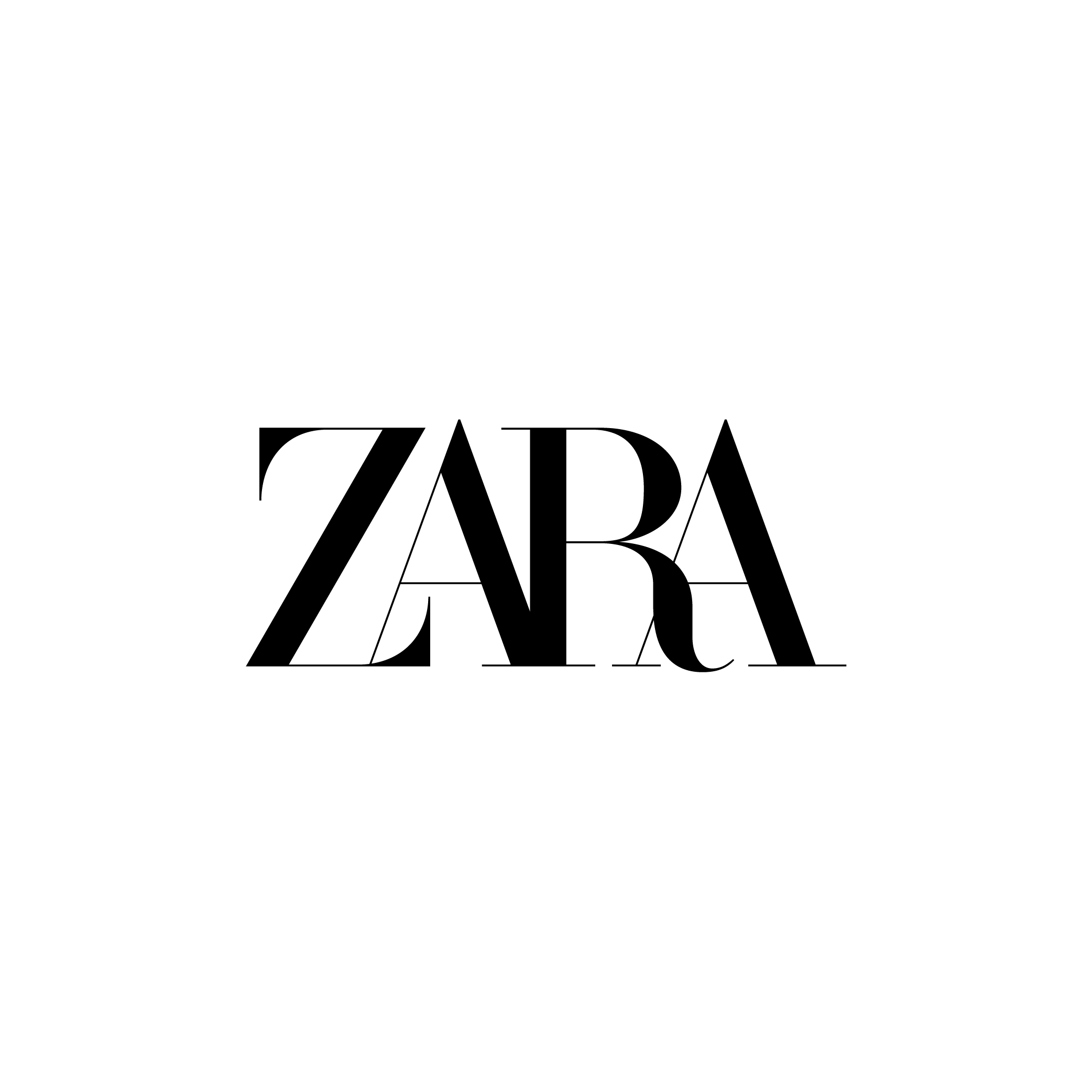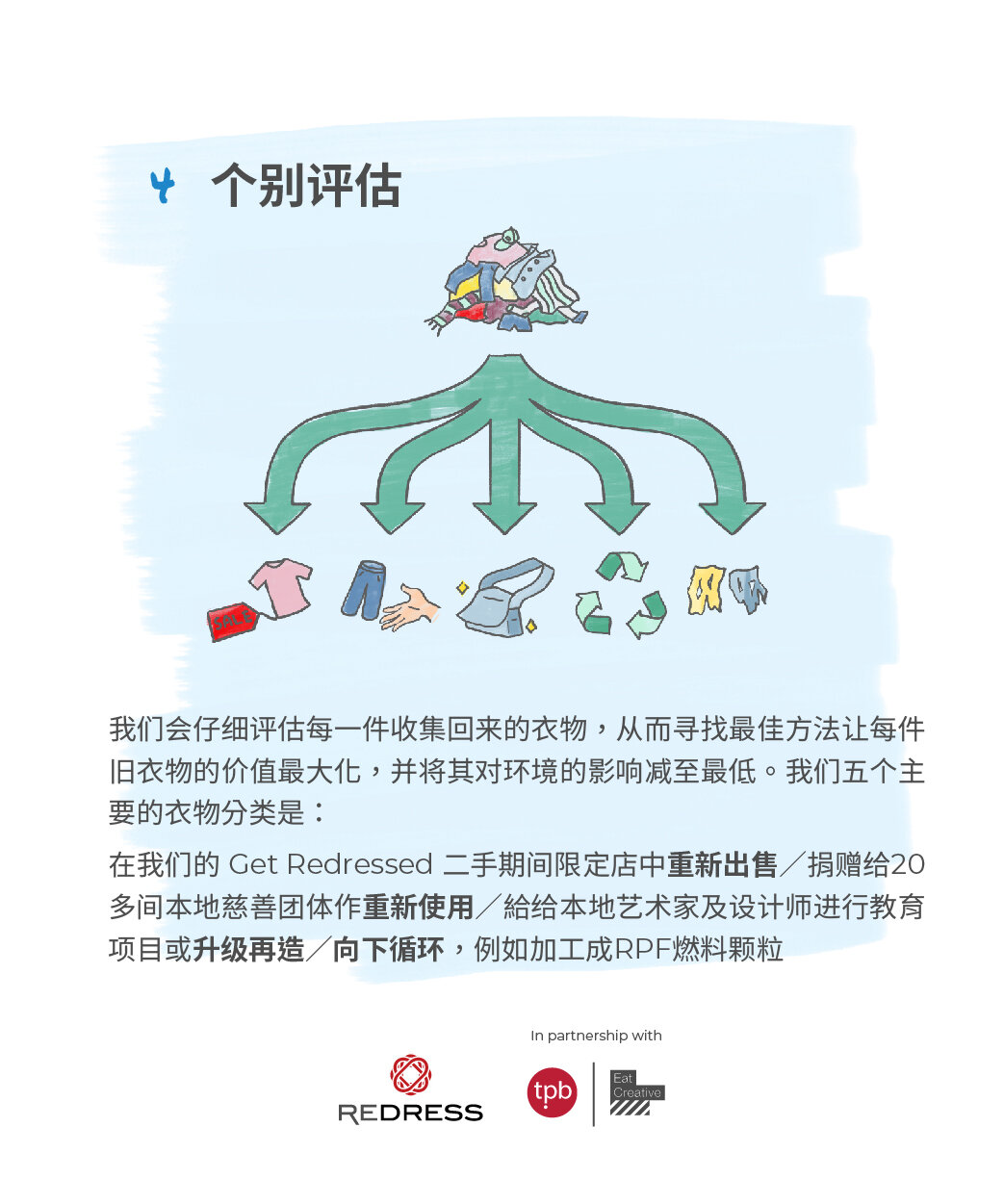CLOTHING COLLECTION
We want to make extending the life of clothes transparent and easy.
TAKEBACK AND GIVE BACK
Redress is working to provide practical, easy and accessible solutions to Hong Kongers to extend the life of their unwanted clothes. Through our year-round Takeback Programme, Redress partners with some of the world’s leading fashion brands to place collection boxes in their retail stores where consumers can give back any brand of clothes for re-use, resale and recycling/downcycling by Redress, making it easier for the public to play their part in the circular fashion economy.
Transparency around how we sort and redistribute clothes collected through our Takeback programmes is very important to us. Our processes aim to maximise the value of each item and keep good quality clothing in circulation for as long as possible, while minimising the possibility of clothes ending up in landfill whether in Hong Kong or abroad. See our infographic and FAQs below for more details.
WHAT WE COLLECT
All menswear
All womenswear
All baby and childrens clothing
Quality accessories including handbags and scarves
Shoes
Home textiles (e.g. cushions, towels, curtains) (except Zara Home locations)
Mouldy items
Broken or damaged bags/accessories
Uniforms
We ask that you wash all clothing before putting it in one of our boxes! Thank you.
Clothing Takeback Locations
Hong Kong Island
|
lululemon |
金钟太古广场一楼118号铺 |
|
lululemon |
鲗鱼涌太古城道18号太古城中心二楼 294 & 295号铺 |
|
lululemon |
金鐘太古廣場一樓118號舖 |
|
lululemon |
鰂魚涌太古城道18號太古城中心二樓 294 & 295號舖 |
|
lululemon |
Shop 118, Level 1, Pacific Place, 88 Queensway, Admiralty, Hong Kong |
|
lululemon |
Shop 294 & 295, 2nd Floor, Cityplaza, 18 Taikoo Shing Road, Taikoo Shing, Ho |
|
ZARA |
G/F-4/F, Crawford House, No. 70. Queen's Road Central, Hong Kong |
|
ZARA |
Shop 1065-1075, IFC Mall, 8 Finance Street, Central, Hong Kong |
|
ZARA |
Shop 121, The Mall, Pacific Place, 88 Queensway, Admiralty, Hong Kong |
|
ZARA |
Shop 414-16 & 418-21, Times Square, 1 Matheson St, Causeway Bay, Hong Kong |
|
Pacific Place Mall 太古廣場 太古广场 |
Near Concierge Desk on L1, Pacific Place, 88 Queensway, Admiralty, Hong Kong 香港金鐘金鐘道88號太古廣場L1 的服務櫃台附近 香港金钟金钟道88号太古广场L1 的服务柜台附近 |
|
Banyan Workspace |
Suite 1204, Eastern Harbour Centre, 28 Hoi Chak Street, Quarry Bay, Hong Kong 鰂魚涌海澤街28號東港中心12樓1204室 鲗鱼涌海泽街28号东港中心12楼1204室 |
Kowloon
|
lululemon |
尖沙咀海港城港威商場3樓 3223A |
|
lululemon |
九龍尖沙咀柯士甸道西一號圓方1084-85, L1 |
|
lululemon |
Shop 3223A, Level 3, Gateway Arcade, Harbour City, Tsim Sha Tsui, Kowloon, Hong Kong |
|
lululemon |
Shop 1084-85, Level 1, ELEMENTS, 1 Austin Road West, Kowloon, Hong Kong |
|
Redress |
78 Ap Liu Street, Sham Shui Po, Kowloon, Hong Kong
香港深水埗鴨寮街78號
香港深水埗鸭寮街78号 |
|
ZARA |
Shop 2328, Level 2, Gateway Arcade, Harbour City, Tsim Sha Tsui, Kowloon, Hong Kong |
|
ZARA |
Shop 1051-54, 1056-57, Elements, 1 Austin Road West, Tsim Sha Tsui, Kowloon, Hong Kong |
|
ZARA |
Shop Unit G1, Telford Plaza, Phase 1, Kowloon Bay, Kowloon, Hong Kong |
|
ZARA Home |
G26, Festival Walk, 80 Tat Chee Ave, Kowloon Tong, Kowloon, Hong Kong |
New Territories
|
ZARA |
Shop 335, Level 3, Phase 1, New Town Plaza, Shatin, N.T., Hong Kong |
FAQ
▼ ▲ Why give back your unwanted clothes?
In Hong Kong we send 402 tonnes of textiles to our overflowing landfills every day1 , equivalent in weight to approximately 17,480 suitcases of textiles. Although our changing tastes and sizes might mean we don’t want them any more, many of these clothes are still in good, wearable condition.
Sending clothes to landfills wastes not only the clothes themselves but all the precious natural resources - and human labour - that went into making them including land, trees, water and oil.
Redress puts wearable clothing back into circulation so that it can be re-used by other people. Expanding the lifespan of clothing through re-use means that we get more mileage out of the resources that went into making clothes already in existence; we reduce the need for the production of new clothing; and we reduce the amount of clothing ending up in landfills.
1Source:Environmental Protection Department, HKSAR. 2024. Monitoring of Solid Waste in Hong Kong: Waste Statistics for 2023. Estimation by Redress, based on a 23kg suitcase.
▼ ▲ How are we different from other clothing collection programmes in Hong Kong?
- Environmental Focus: Our environmental mission and status as an environmental charity forms the backbone of all of the decisions we make including how we collect, sort and redistribute clothing resources (for example, our commitment not to resell clothing in overseas markets where we have no visibility over how the clothing is used or where it ends up).
- Sustainable Operations: We are committed to sustainability in our operations, for example reusing collection boxes, recycling plastic and paper waste, exploring and utilising sustainable logistics alternatives such as paper packing tape.
- Attention to Detail: We employ a careful sorting process focused on capturing the greatest economic and environmental value from each item of clothing, minimising environmental impact, minimising waste entering Hong Kong’s landfills, and providing targeted and meaningful support for our charity partners.
- Finding Solutions: We are committed to finding a solution for the ‘bottom layer’ of unusable clothing (e.g. clothing that is stained or broken and therefore not suitable for reuse) and minimise clothing sent to landfill, by researching and trialling new solutions for recycling/downcycling within Asia.
- Trusted Partner: We are committed to transparency in our collection, sorting, redistribution and reporting processes, and regarding the partners we work with. If you have any questions about our processes, please Contact Us.
- Education Everywhere: We see education as an essential part of the clothing waste solution, and our relationships with a large number of retailers, companies, clubs and schools which provide a pipeline to engage with Hong Kong consumers of all ages and from diverse backgrounds.
- Collaboration: We have long-standing relationships with a large number of local charity partners serving a diverse range of social causes, with whom we provide carefully sorted good quality clothing.
▼ ▲ What types of clothing can I give?
Any clothing and fashion accessories for men, women and children, in any condition. The only exception are uniforms, whether from schools or companies as there’s currently no solution to reuse these. We do not accept:
- any badly damaged or broken fashion accessories (as we currently have no avenues to recycle these items)
- shoes
- any home textiles (e.g. cushion covers, curtains, towels, bedding), except at our Zara Home locations, as while we are constantly looking for ways to deal with a broader range of textile waste, Redress’ primary focus is on clothing waste
- any mouldy items (as these items can contaminate other good condition items)
Please remember to always wash the clothes first!
▼ ▲ How do you sort the clothes received?
All clothing dropped in our collection boxes is processed, sorted and redistributed by Redress with the invaluable help of volunteers from the Hong Kong community. Every piece of clothing is checked manually for damage. Our careful sorting process maximises the value of each item, better supports our charity partners by matching clothing with their specific needs, and reduces wastage.
▼ ▲ Where do the clothes go?
Our number one priority is increasing utilisation and limiting the amount of clothing that ends up in landfills.
Our top-level sorting categories are: reuse by local charity partners (55-65%); resale at Redress’ secondhand charity stores (10-15%), downcycling/recycling (approx. 20-30%) and landfill (approx. 1- 4%).
Within these main categories we sort into up to 20 sub-categories based on each garment’s type and condition, our charity beneficiaries’ specific needs, and current recycling/downcycling capabilities. Once the clothes are sorted, boxed and labelled, Redress transports and redistributes them to numerous charity partners and other resale or reuse channels as described below.
The majority of wearable items are redistributed to our network of 20+ local charity partners for reuse by their beneficiaries including Crossroads, Caritas, YWCA, ImpactHK, Christian Action and many more. We work with our charity partners to understand how the clothing will be used, and to the best of our knowledge, none of the clothing that Redress donates to partner charities is sold as commercial exports to developing countries.
A small percentage of the most fashionable and best condition wearable clothes are resold at our very own secondhand store - The Redress Closet, our pop-up shops, or through our selected resellers in Hong Kong such as Retykle, to promote the accessibility of secondhand shopping in Hong Kong.
▼ ▲ What about clothes that cannot be re-used?
Clothes that have reached the end of their ‘wearable’ life (e.g. used personal items like underwear, socks, sleepwear and swimwear, or really worn out/stained/damaged items), or clothes that our charity partners don’t want (e.g. company/school uniforms), are very difficult for us to deal with.
Globally, including in Hong Kong, there is a lack of viable recycling technologies to deal with these ‘bottom layer’ clothes at scale. While some local recycling options do exist (e.g. The Billie System fibre-to-fibre recycling facility and the HKRITA G2G facility), these facilities are not currently able to process mixed clothing of the type and volume collected by Redress.
Despite this, Redress believes that downcycling is preferable to landfill and so we are constantly researching and trialling new solutions within the wider Asia region. At the moment, Redress is working with a partner in Hong-Kong who shreds all the materials and reproduces them into boxing bags (to be sent to Thailand boxing schools). Metal pieces (zipper, buttons) are removed at the shredding process to be recycled separately. Each boxing bag requires approximately 40-50 kg shredded materials. We also send some unwearable to HKRITA to support the development of their Green Machine, which allows fiber-to-fiber recycling for blended textiles.
▼ ▲ Do you send any items of clothes collected to landfill?
For a very small percentage (1-4%) of items we have no choice but to send them to landfill. This includes anything mouldy where there is risk of contaminating other items, any broken or very poor condition shoes, bags and fashion accessories as well as broken or very poor condition fake or real leather clothing as they are made from materials that cannot be recycled. It also includes actual rubbish or random items that are dropped in our boxes (e.g. , plastic bags, used cosmetics, broken stationery, etc.).
